Is Software a Fixed Asset?
Learn the different methods of accounting for software licences
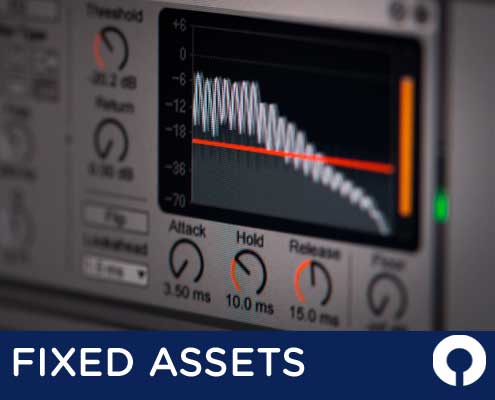
Learn the different methods of accounting for software licences

Correctly accounting for software can be complicated and will depend on the type of software, it’s value and how it is to be used. There are many different types of software that a business may use in its operations. You may use an ERP system, financial software, time-tracking software, payroll system, or hold licences for a wide range of other software types to help streamline operations.
But when you use software in operations it’s important to know how to account for it. Is it a fixed asset on your balance sheet? Is software tangible or intangible? If you buy a software licence, does it need to be capitalised, and what if you develop the software product internally?
Let’s take a look at how software fits into your company’s asset register and expenses.
According to the International Financial Reporting Standards, (IFRS), a fixed asset is defined as:
‘a resource controlled by the enterprise as a result of past events and from which future economic benefits are expected to flow to the enterprise.’
In short, an asset is something that a business or individual owns or controls which has value.
There are several types of assets and some assets may fall into multiple categories.
Current assets are resources that are expected to be consumed or converted into cash in one year. These short-term assets include cash itself, cash equivalents, inventory, and accounts receivable.
In contrast to current assets, fixed assets are not expected to be consumed or converted into cash within a year. These are long-term economic resources and they undergo depreciation over time. Depreciation is an accounting method that allocates the cost of the asset over its lifespan. Examples of fixed assets include equipment, machinery, land, and buildings. Fixed assets can be tangible or intangible assets.
Tangible assets are the main type of assets that most businesses will use to produce their products or services to create revenue. These assets have a physical presence and are easy to record on the balance sheet because they normally have a finite value and lifespan. While most fixed assets are tangible assets (for example, buildings or equipment), not all tangible assets are fixed assets. For example, inventory/stock is tangible, but is a current asset.
Intangible assets do not have a physical existence. These economic resources include trademarks, copyrights, and patents. Because these are intangible and their usefulness in the future is hard to predict, it can be difficult to assign a value to intangible assets. Amortisation, similar to depreciation, can be used to apportion the cost of an intangible asset over time.
Whether your company uses accounting software, payroll software, CRM software, or any other type of software, it needs to be accounted for. However, software can be tricky to categorise because it doesn’t always fall neatly into a single category for accounting treatment. Let’s take a closer look at how to categorise and value software in accounting.
First of all, software for long term use is a fixed asset. This is because software is a long-term asset that a company uses to generate revenue. Unlike a current asset such as inventory, software is not likely to be converted into cash within one year. Where a perpetual software licence is purchased, typically, this suggests that the usage is likely to be longer term, the upfront cost is usually higher, and the licence will be capitalised on the balance sheet. However, in the case of SaaS (Software as a Service), a lot depends on the value and length/type of contract. In most cases, if it looks like you are paying for a service and there is no long-term element, this would be expensed rather than capitalised as a fixed asset. If you committed to a longer term subscription for clearly identifiable licences then this is likely to be treated as a fixed asset. As we know, many fixed assets tend to be tangible items with a physical component and an easily identifiable cost. Where does software fit into this, and what costs can you capitalise?
Software is capitalised as an intangible asset on the balance sheet in most cases if the usage is expected to be long term and the value is sufficient. There are a few situations where software might be treated as tangible, such as when it forms an integral part of the functioning of the hardware it’s running on. We have already established that it is sometimes harder to identify accurate costs for intangible assets, and software is no different. Usually, costs relating to the length of the contract are capitalised, rather than just any immediate, year 1 costs incurred. It is often possible to include other costs, such as installation, development and testing work, along with the licence costs themselves, when capitalising. However, consultancy costs such as training or maintenance may not be included, so you have to be careful.
While software has its own useful life and will eventually become outdated or need to be upgraded, it doesn’t physically depreciate in value. It’s not like a building or piece of equipment that gains wear and tear over time.
Capitalisation is an accounting method that allows the depreciation of the cost of the asset over its useful life rather than expensing it in the period that the cost was incurred. This means that it is not listed as an expense on the income statement but instead as an asset on the balance sheet.
As discussed, in some cases, software can be capitalised in the same way as Property, Plant, and Equipment (PP&E). PP&E are long-term assets that are essential to a company’s operations and are physical (or have a physical component). These fixed assets are considered PP&E if they have useful lives of two years or longer, have been acquired or built for the use of the company, and are not intended to be sold.
The FASB and GASB accounting standards state that software can be classified as a fixed asset for capitalisation in some cases. This isn’t only dependent on a particular cost of the software but is impacted by the way the software is contracted for, licenced and used. If the software will be used for more than a year, isn’t intended to be sold, and has been bought or developed for the company’s use, it can be accounted for as a fixed asset and amortised.
SFFAS no. 10 section 38 & 39 gives the example of software and weapons systems. If the software is part of the weapons system, this should be included in the cost of investing in that weapons system and therefore should not be capitalised. However, software that is used to manage the account for the weapons system would be considered PP&E and should therefore undergo capitalisation.
Another example is a computer operating system. Let’s say an organisation purchases 20 computers for staff to use (a fixed, tangible asset) and 20 licences to an operating system. The computers need the operating system to run so the computers and software licences are counted together as PP&E. However, if you then also purchase a licence to an accounting software for the 20 computers, this is an intangible asset that does not count as PP&E because it is not essential to run the computers.
Another thing to consider is whether the computer software has been developed by the company itself for internal use or has been licensed from a software provider. Purchasing a software licence makes capitalisation relatively simple because this is a one-time upfront fee.
However, you may also pay an annual fee for software upgrades. These upgrades are not an intangible asset in themselves and are expensed in profit or loss when you incur them; think of them as analogous to the maintenance costs of PP&E.
In contrast, if the entity has built its own software, capitalising these costs can be more complicated because of the time and cost involved in creating it, which may not always be possible to define.
Looking for software to streamline and simplify your asset management needs? FMIS asset management software can transform your fixed asset accounting and management processes, providing control and visibility over your fixed asset register.
Available as a cloud-based or on-premises system, FMIS software is a feature-rich tool which can handle everything from asset tracking to equipment maintenance while also integrating with your existing ERP or finance systems.
Want to see for yourself how FMIS asset management software can transform your business? Request a demo today.
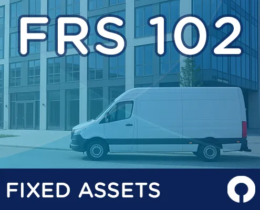 https://www.fmis.co.uk/wp-content/uploads/2025/06/Feature-image-495x400-copy.webp
400
495
John de Robeck
https://www.fmis.co.uk/wp-content/uploads/2016/07/FMIS-logo-340x156.png
John de Robeck2025-06-20 15:08:202025-06-20 15:09:03FRS 102 Fixed Asset Accounting: A Practical Guide for UK Businesses
https://www.fmis.co.uk/wp-content/uploads/2025/06/Feature-image-495x400-copy.webp
400
495
John de Robeck
https://www.fmis.co.uk/wp-content/uploads/2016/07/FMIS-logo-340x156.png
John de Robeck2025-06-20 15:08:202025-06-20 15:09:03FRS 102 Fixed Asset Accounting: A Practical Guide for UK Businesses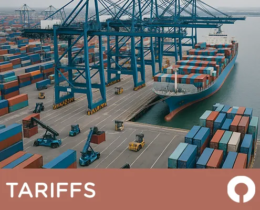 https://www.fmis.co.uk/wp-content/uploads/2025/04/Capital-Expenditure-Tariffs-495x400-1.webp
400
495
John de Robeck
https://www.fmis.co.uk/wp-content/uploads/2016/07/FMIS-logo-340x156.png
John de Robeck2025-05-14 16:20:132025-06-04 11:05:01How Tariffs Are Transforming Capital Expenditure Strategy
https://www.fmis.co.uk/wp-content/uploads/2025/04/Capital-Expenditure-Tariffs-495x400-1.webp
400
495
John de Robeck
https://www.fmis.co.uk/wp-content/uploads/2016/07/FMIS-logo-340x156.png
John de Robeck2025-05-14 16:20:132025-06-04 11:05:01How Tariffs Are Transforming Capital Expenditure Strategy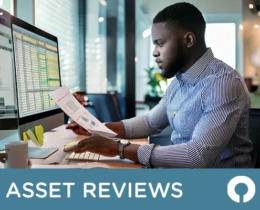 https://www.fmis.co.uk/wp-content/uploads/2024/12/Depreciation-Review-495x400-1.webp
400
495
John de Robeck
https://www.fmis.co.uk/wp-content/uploads/2016/07/FMIS-logo-340x156.png
John de Robeck2024-12-18 15:04:412025-06-09 13:27:31What is a Depreciation Review and when is it needed?
https://www.fmis.co.uk/wp-content/uploads/2024/12/Depreciation-Review-495x400-1.webp
400
495
John de Robeck
https://www.fmis.co.uk/wp-content/uploads/2016/07/FMIS-logo-340x156.png
John de Robeck2024-12-18 15:04:412025-06-09 13:27:31What is a Depreciation Review and when is it needed?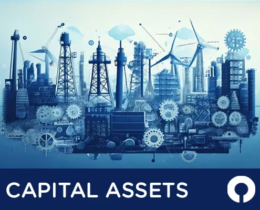 https://www.fmis.co.uk/wp-content/uploads/2024/12/Capital-Asset-Management-495x400-1.webp
400
495
John de Robeck
https://www.fmis.co.uk/wp-content/uploads/2016/07/FMIS-logo-340x156.png
John de Robeck2024-12-09 10:09:252025-06-09 13:31:21What is Capital Asset Management Software? (CAM)
https://www.fmis.co.uk/wp-content/uploads/2024/12/Capital-Asset-Management-495x400-1.webp
400
495
John de Robeck
https://www.fmis.co.uk/wp-content/uploads/2016/07/FMIS-logo-340x156.png
John de Robeck2024-12-09 10:09:252025-06-09 13:31:21What is Capital Asset Management Software? (CAM)FMIS Ltd
167b John Wilson Business Park
Whitstable
Kent
CT5 3RA
United Kingdom
Phone:+44 (0) 1227 773003
Fax:+44 (0) 1227 773005
Sales:sales@fmis.co.uk
Support:support@fmis.co.uk

 G-Cloud 13
G-Cloud 13| Cookie | Duration | Description |
|---|---|---|
| cookielawinfo-checkbox-advertisement | 1 year | Set by the GDPR Cookie Consent plugin, this cookie is used to record the user consent for the cookies in the "Advertisement" category . |
| cookielawinfo-checkbox-analytics | 11 months | This cookie is set by GDPR Cookie Consent plugin. The cookie is used to store the user consent for the cookies in the category "Analytics". |
| cookielawinfo-checkbox-functional | 11 months | The cookie is set by GDPR cookie consent to record the user consent for the cookies in the category "Functional". |
| cookielawinfo-checkbox-necessary | 11 months | This cookie is set by GDPR Cookie Consent plugin. The cookies is used to store the user consent for the cookies in the category "Necessary". |
| cookielawinfo-checkbox-others | 11 months | This cookie is set by GDPR Cookie Consent plugin. The cookie is used to store the user consent for the cookies in the category "Other. |
| cookielawinfo-checkbox-performance | 11 months | This cookie is set by GDPR Cookie Consent plugin. The cookie is used to store the user consent for the cookies in the category "Performance". |
| CookieLawInfoConsent | 1 year | Records the default button state of the corresponding category & the status of CCPA. It works only in coordination with the primary cookie. |
| PHPSESSID | session | This cookie is native to PHP applications. The cookie is used to store and identify a users' unique session ID for the purpose of managing user session on the website. The cookie is a session cookies and is deleted when all the browser windows are closed. |
| viewed_cookie_policy | 11 months | The cookie is set by the GDPR Cookie Consent plugin and is used to store whether or not user has consented to the use of cookies. It does not store any personal data. |
| Cookie | Duration | Description |
|---|---|---|
| CONSENT | 2 years | YouTube sets this cookie via embedded youtube-videos and registers anonymous statistical data. |
| _ga | 2 years | The _ga cookie, installed by Google Analytics, calculates visitor, session and campaign data and also keeps track of site usage for the site's analytics report. The cookie stores information anonymously and assigns a randomly generated number to recognize unique visitors. |
| _gat_UA-48954022-1 | 1 minute | A variation of the _gat cookie set by Google Analytics and Google Tag Manager to allow website owners to track visitor behaviour and measure site performance. The pattern element in the name contains the unique identity number of the account or website it relates to. |
| _gid | 1 day | Installed by Google Analytics, _gid cookie stores information on how visitors use a website, while also creating an analytics report of the website's performance. Some of the data that are collected include the number of visitors, their source, and the pages they visit anonymously. |
| Cookie | Duration | Description |
|---|---|---|
| VISITOR_INFO1_LIVE | 5 months 27 days | A cookie set by YouTube to measure bandwidth that determines whether the user gets the new or old player interface. |
| YSC | session | YSC cookie is set by Youtube and is used to track the views of embedded videos on Youtube pages. |
| yt-remote-connected-devices | never | YouTube sets this cookie to store the video preferences of the user using embedded YouTube video. |
| yt-remote-device-id | never | YouTube sets this cookie to store the video preferences of the user using embedded YouTube video. |
